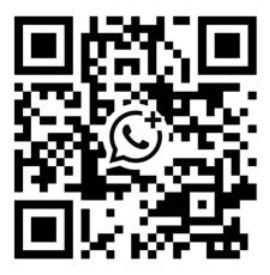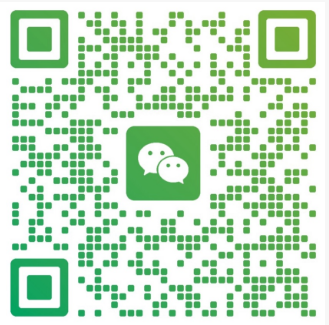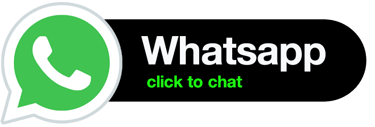How do you ensure products meet U.S. quality standards when sourcing from China?
verify standards early, set specs, audit factories, test with U.S.-accredited labs, and run ongoing inspections so products meet U.S. rules and stay sale-ready. I focus on paperwork, lab reports, and in-line checks so customs and customers see proof.
Sourcing Expert Allen Zeng
9/30/20256 min read


I know importing to the U.S. feels risky. I have seen bad batches and costly recalls. I use a clear, repeatable process to avoid that.
I verify standards early, set specs, audit factories, test with U.S.-accredited labs, and run ongoing inspections so products meet U.S. rules and stay sale-ready. I focus on paperwork, lab reports, and in-line checks so customs and customers see proof.
Read on if you need a clear, simple plan you can use today.
What steps do you take to verify compliance with U.S. quality regulations?
I used to get vague test reports. That cost me time and trust. Now I map rules before I source and I force proof.
I start by mapping which U.S. laws apply, then I require tests, lab reports, and a General Certificate of Conformity when needed. I keep files handy for customs and buyers and I make testing recurring so nothing drifts over time.
How I break the compliance steps down
I list the steps and follow them one by one. This keeps things simple. Each step has a reason and an outcome.
Step list:
Map regulations for the product.
Write technical specs and materials list.
Ask suppliers for past test reports.
Send samples to U.S.-accepted labs.
Do pre-production, mid-production, and pre-shipment checks.
Collect certificates and pack paperwork with the shipment.
Repeat tests every batch or when design changes.
Examples of products and common U.S. rules:
Consumer gadgets must meet CPSC and FCC. Testing is done by labs like SGS or Intertek.
Electronics must meet FCC and UL. Testing is done by UL or TÜV.
Food and supplements must follow FDA rules. Testing is done by U.S. labs or accredited labs in China.
Toys must follow ASTM F963 and CPSC rules. Testing is done by SGS or Intertek.
Notes on labs and proof
I use labs that U.S. importers trust. I ask for full test reports, not summaries. I check the lab accreditation. If a report is unclear, I send a follow-up sample and ask for rerun. I also keep all raw data and photos in a shared folder. That protects you if customs or a client asks.
Where the keywords fit
When a customer orders complex entertainment gear, like interactive projection floor games or immersive sports game equipment, I treat them like electronics. I check EMC, mechanical safety, and surface hazards. That means extra test steps and sturdier packaging.
How do you handle quality control issues with Chinese suppliers?
I once accepted a shipment with many small failures. I lost time and the buyer’s trust. After that I changed my QC rules.
I set clear acceptance criteria, use staged inspections, and enforce corrective action plans when defects appear. I also track supplier performance and only keep partners who improve fast.
The QC process I use
I use three main inspection points. Each point catches different risks.
Pre-production check: I confirm raw materials. I verify certificates for materials. I check molds and sample parts.
During production (in-process): I audit production lines. I check first units in the run. I verify assembly steps and torque points. I do random checks.
Pre-shipment inspection: I test final units. I open random boxes. I measure and test against specs.
Typical QC checklist:
Visual defects
Dimension check
Functional test
Packaging check
Labeling and user manual
Safety guards and wiring
Examples of checkpoints and actions:
Raw materials: I check certificates, color, hardness. If it fails, I reject the batch and hold for supplier fix.
First article: I check dimensions and function. If it fails, I stop the line until fixed.
Mid-run sampling: I check random units. If defects are found, I log the defect rate and require corrective actions.
Final inspection: I test full units and packaging. If it fails, I reject the shipment and demand rework.
How I enforce fixes
When I find defects I create a Corrective Action (CA) report. The CA lists the issue, root cause, and steps to fix. I set deadlines. I verify the fix on the next inspection. If the supplier repeats the same problem, I escalate: price penalty, hold inventory, or find another factory.
Communication and culture
I write short, clear messages. I include photos and test logs. I ask the supplier to respond with specific steps and dates. This reduces back-and-forth. It also fixes the common problem where sales reps do not know the line details.
Special case: large entertainment gear
For big items like interactive trampoline park games or modular attractions, QC matters more. I check structure, welds, anchors, and user impact zones. I also demand on-site load tests and full assembly photos. I may send a field engineer to witness tests if the order is large.
Can you provide certifications for U.S. compliance?
I used to rely on verbal promises from suppliers. That led to trouble. Now I demand hard proof before shipping.
I can obtain and deliver certificates like General Certificate of Conformity, UL, FCC, and test reports from accredited labs. I collect lab reports, factory certificates, and chain-of-custody records and send them with the shipment.
Common certificates and when you need them
Examples:
General consumer goods require a General Certificate of Conformity. The importer compiles this using test data.
Electrical and electronics require FCC declaration and UL marks. Labs like UL and Intertek issue these.
Toys and child items require ASTM reports and CPSIA tests. Labs like SGS and Intertek handle these.
Food and supplements require FDA compliance and cGMP. Manufacturers and accredited labs provide documents.
How I collect real certificates
I ask for original lab reports with sample IDs.
I confirm lab accreditation (CNAS, ILAC-MRA, or U.S. recognition).
I cross-check report dates and sample photos.
I request supporting docs: material COAs, supplier ISO certificates, and test photos.
I create a single PDF folder for each shipment with all documents.
Checklist I send with shipments:
Test reports (full PDF)
GCC or product-specific certificates
Factory ISO 9001 or QMS certificates
Material COA (e.g., RoHS, lead-free)
Photos of samples and production lots
Packing list and labeling proof
Examples of marks and labs:
UL or ETL marks show safety testing for U.S., done by UL or Intertek.
FCC certificates cover EMC and radio rules, tested by EMC labs.
CPSC tests cover consumer safety, done by SGS or Intertek.
FDA compliance is proven with lab reports and manufacturer documents.
Real-world tip I use
If a supplier gives an old test report, I ask for a new sample test. If the product changed even slightly, I never accept old reports. I also log the certificate number and call the issuing lab when needed. This cuts out fake reports.
How do you ensure products are safe for U.S. consumers?
I have seen small flaws become big hazards. I now design tests around user safety and real use cases. I treat safety as part of design, not an afterthought.
I perform risk assessments, add user-safety tests, and insist on usable manuals and warnings. I also check packaging, child-safety, and electrical safety as part of every order.
Safety plan I follow
Safety is a set of checks done early and often.
Risk assessment: I list how a real person will use the product. I note pinch points, sharp edges, electric shocks, choking, and fall risks.
Design controls: I ask engineers to add safety stops, guards, and insulation. I require fail-safe parts for critical systems.
Lab safety tests: I send samples for mechanical strength, drop and impact tests, electrical insulation, burn and flammability tests, and toxicity checks for plastics.
Example: safety checks for active play equipment
When sourcing immersive sports game equipment or arcade gear, I check structural load limits, edge rounding and padding, electronic cut-off under fault, and emergency stops with clear labeling.
Safety checks by product type
Mechanical: I test load, fatigue, and welds to prevent collapse and injury.
Electrical: I test insulation and grounding to avoid shocks and fires.
Chemical: I test for lead and phthalates to prevent poisoning, especially for kids.
User interface: I test buttons and screens to prevent misuse and hazards.
Packaging: I check for sharp edges and suffocation risks to make unpacking safe.
Manuals and warnings
I write simple manuals and leave spaces for the brand. I make warnings clear and short. I also add pictograms when possible. Good manuals cut returns and injuries.
On-site and field testing
For large installs, I recommend field trials. I get units set up in real spaces and let test users play under supervision. I collect feedback on durability, safety, and usability. I then change materials or fix weak points before full production.
Keywords and safety focus
Big interactive projects, such as interactive game room manufacturer orders and multiplayer interactive arena games, need extra safety checks. I add stage tests for moving parts and contact sensors. I also ask the factory to add redundant safety circuits.
Conclusion
I use clear specs, U.S.-approved tests, staged inspections, and tight supplier control to keep imports safe and compliant.
Connect Us
Great partnerships start with a simple hello.
Quick chat
Explore
© 2025. All rights reserved.










